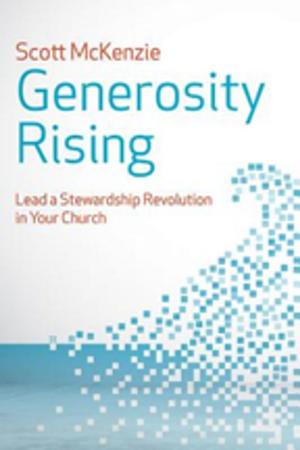Hit the Bullseye
How Denominations Can Aim the Congregation at the Mission Field
Nonfiction, Religion & Spirituality, Christianity| Author: | Paul D. Borden | ISBN: | 9781426722707 |
| Publisher: | Abingdon Press | Publication: | September 1, 2010 |
| Imprint: | Abingdon Press | Language: | English |
| Author: | Paul D. Borden |
| ISBN: | 9781426722707 |
| Publisher: | Abingdon Press |
| Publication: | September 1, 2010 |
| Imprint: | Abingdon Press |
| Language: | English |
This book is not an attempt to offer hope, help, or even advice on what denominations need to do. However, it is a book about a significant turn-around of a middle-level administration of justice in one Protestant denomination and it does offer hope that other like administrations might be able to experience a better and more effective existence. Everyone's experience is unique and therefore cannot be replicated. However, the implementation of foundational all-encompassing principles, the development of new strategies, and the performance of specific tactics that are successful in one situation does offer hope to others that their modeling of the principles, adapting the strategies, and creating specific tactics to fit their context can bring change.
***"*This book is a gutsy look at denominational life, leadership and vision, and offers new paradigms for the local church, middle judicatories and national denominational life. A must-read for anyone interested in bringing renewal to the local church and our denomination. Clearly, Borden has hit the bull's-eye with regard not only to our denomination's needs but also how renewal begins in the local church." - ABE News
Foreword to Hit the Bullseye by****Leith Anderson
July 2003
"Some look at things that are, and ask why. I dream of things that never were and ask why not?"
-- George Bernard Shaw
There are approximately 400,000 churches in the United States and the vast majority of them belong to denominations. Some are healthy, vibrant, and growing. Most are tired, struggling, not growing, and don’t know what to do.
Plenty of critics and cynics take surveys, analyze data, and write books about what is wrong with the churches of America. As if following the theology of
Chicken Little they are convinced that the sky is falling and there is little we can do except seek cover. Proposals for renewal often are offered by theorists who tell practitioners what to do but have never actually done it themselves.
What if?
** **
What if there was a way to help declining churches to grow? What if we could teach pastors how to lead their congregations to spiritual renewal? What if thousands of churches changed from maintenance to mission? What if a movement began with 200 churches that grew to 200,000 churches? What if millions of unchurched people came into lasting relationships with Jesus Christ and the church? What if the denominations of America with all of their people, property, and potential became the epicenter of this spiritual earthquake that became known as the Great Awakening of the 21st Century?
Maybe all this sounds too good to be true. Well, it has already begun. Centered in the earthquake zone of northern California, the American Baptist Churches of the West have demonstrated that a plateaued and declining region of mainline congregations can become a model of healthy and growing congregations. They have overcome the usual excuses that “our churches are too small,” “we have too many older people and congregations,” and “property here is too expensive.” They followed a powerful formula of biblical strategies, courageous leadership, and much hard work. What is most amazing is that the turnaround took less than five years.
Why not?
Here is the dream. Denominational leaders, executive ministers, bishops, district superintendents, regional directors, seminary teachers, pastors, and lay leaders will discover what God has done in northern California and say, “Why not here?” “With a few creative adaptations we can do the same thing in our denomination and in our churches.”
They will start small and multiply. They will risk their traditions, finances, staff, and jobs. They will respond to misunderstanding with teaching and take criticism with grace. Then there will be one successful church transformation—new vision, new faith, new people, and new excitement. One will become ten and ten will become one hundred. Church by church, region by region, denomination by denomination—a true reformation will bring a great new era to the people and churches of our generation. It can be done. It has been done. This is a dream of the way things can be. Be among those who say, “Why not? Let’s do it!”
This book is not an attempt to offer hope, help, or even advice on what denominations need to do. However, it is a book about a significant turn-around of a middle-level administration of justice in one Protestant denomination and it does offer hope that other like administrations might be able to experience a better and more effective existence. Everyone's experience is unique and therefore cannot be replicated. However, the implementation of foundational all-encompassing principles, the development of new strategies, and the performance of specific tactics that are successful in one situation does offer hope to others that their modeling of the principles, adapting the strategies, and creating specific tactics to fit their context can bring change.
***"*This book is a gutsy look at denominational life, leadership and vision, and offers new paradigms for the local church, middle judicatories and national denominational life. A must-read for anyone interested in bringing renewal to the local church and our denomination. Clearly, Borden has hit the bull's-eye with regard not only to our denomination's needs but also how renewal begins in the local church." - ABE News
Foreword to Hit the Bullseye by****Leith Anderson
July 2003
"Some look at things that are, and ask why. I dream of things that never were and ask why not?"
-- George Bernard Shaw
There are approximately 400,000 churches in the United States and the vast majority of them belong to denominations. Some are healthy, vibrant, and growing. Most are tired, struggling, not growing, and don’t know what to do.
Plenty of critics and cynics take surveys, analyze data, and write books about what is wrong with the churches of America. As if following the theology of
Chicken Little they are convinced that the sky is falling and there is little we can do except seek cover. Proposals for renewal often are offered by theorists who tell practitioners what to do but have never actually done it themselves.
What if?
** **
What if there was a way to help declining churches to grow? What if we could teach pastors how to lead their congregations to spiritual renewal? What if thousands of churches changed from maintenance to mission? What if a movement began with 200 churches that grew to 200,000 churches? What if millions of unchurched people came into lasting relationships with Jesus Christ and the church? What if the denominations of America with all of their people, property, and potential became the epicenter of this spiritual earthquake that became known as the Great Awakening of the 21st Century?
Maybe all this sounds too good to be true. Well, it has already begun. Centered in the earthquake zone of northern California, the American Baptist Churches of the West have demonstrated that a plateaued and declining region of mainline congregations can become a model of healthy and growing congregations. They have overcome the usual excuses that “our churches are too small,” “we have too many older people and congregations,” and “property here is too expensive.” They followed a powerful formula of biblical strategies, courageous leadership, and much hard work. What is most amazing is that the turnaround took less than five years.
Why not?
Here is the dream. Denominational leaders, executive ministers, bishops, district superintendents, regional directors, seminary teachers, pastors, and lay leaders will discover what God has done in northern California and say, “Why not here?” “With a few creative adaptations we can do the same thing in our denomination and in our churches.”
They will start small and multiply. They will risk their traditions, finances, staff, and jobs. They will respond to misunderstanding with teaching and take criticism with grace. Then there will be one successful church transformation—new vision, new faith, new people, and new excitement. One will become ten and ten will become one hundred. Church by church, region by region, denomination by denomination—a true reformation will bring a great new era to the people and churches of our generation. It can be done. It has been done. This is a dream of the way things can be. Be among those who say, “Why not? Let’s do it!”















